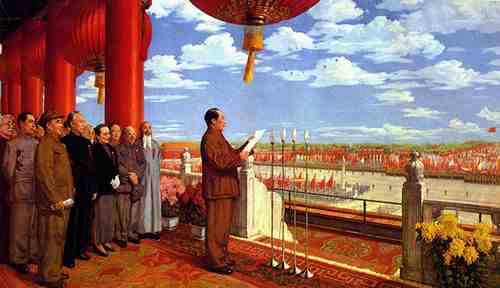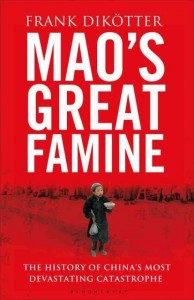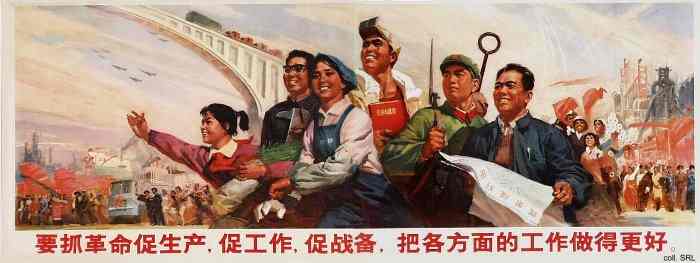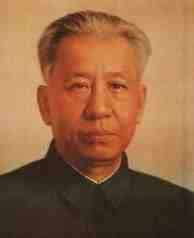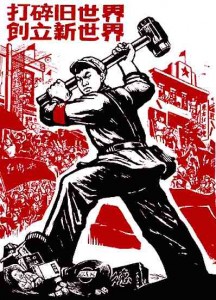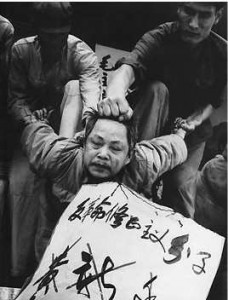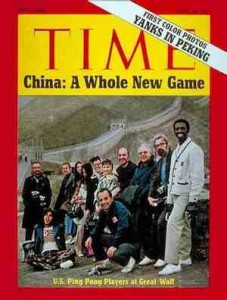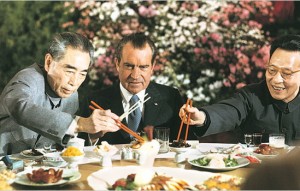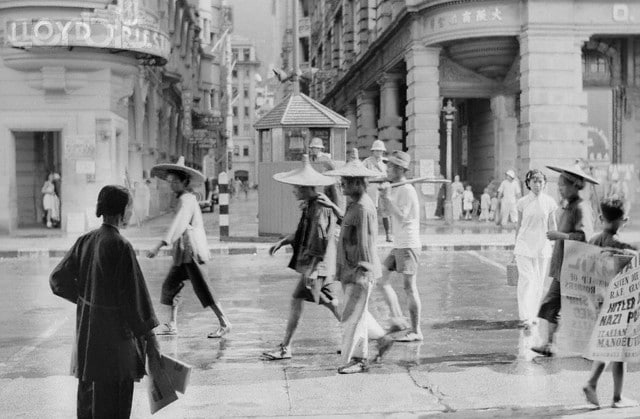The first years of the China under Mao rule was greeted with relief and joy after decades of conflict. With moral confidence, the CCP got off on a good start—ridding the streets of prostitutes, gangs and opium dens.
Women were given a better deal too—granted equal status and the right to divorce (pre-arranged marriages also banned).
During the first decade, China received support from Soviets—modeling their industrial, banking and commercial nationalizations on their system (the two countries would later break relations after a series of bitter ideological and territorial conflicts).
But Things Quickly Turned Ugly
Soon the Revolution starts to sour after Mao launches a series of purges and mass-campaigns that went savagely awry (culminating with the horrors of the Cultural Revolution). Large numbers were displaced, imprisoned or executed. Between 1949 and Mao’s death in 1976, somewhere between 40-70 million Chinese died prematurely under his rule (largely through famine).
Turning inward, China would remain isolationist until about 1972.
1950: The PLA reasserts Chinese control over Tibet. The teenaged 14th Dalai Lama (the current one) becomes a Chinese figurehead ruler.
1952: Mao begins Rural Collectivization. Based on a Soviet-style 5 year plan for economic growth, individual land-ownership is abolished and replaced with co-operatives (of about 200-300 families).
1957: The Hundred Flowers Movement
Under the slogan “Let a Hundred Flowers Bloom and a Hundred Schools of Thought Contend,” Mao actively encourages the opinions and criticisms from all walks of society, including intellectuals (the name is a reference to the Hundred Schools of Thought period of the Warring States Period).
But soon, things get out of hand as the opinions grow more critical. More and more flowers denounce his regime’s “malevolent tyranny” and call for strikes.
Mao’s response is draconian (some say it was a deliberate trap). He launches a brutal “Anti-Rightist Campaign.” A half-million dissidents are sent to country for “reform through labor” (many stay there for 20 years and some die). Most victims are intellectuals, who he has disliked since his youth when he worked in Beijing University’s library (I suspect he would be an enthusiastic Sarah Palin supporter today).
The Great Leap Forward [1958-1961]
Frustrated by the slow rate of change, Mao wants to take things up a notch. His Great Leap Forward was supposed to propel China on the fast track to modernization. Massive communes replace the family. Personal plots and livestock are banned. Meals taken communally. Even sleep is rationed at six hours every two days (Are you kiddin’ me?!).
Each commune is ordered to set up “backyard” blast furnaces to bolster steel production—all manner of metal, including “luxury items” like pots, pans, and eating utensils are melted down.
The results are disastrous. With labor diverted from fields, grain yields plummet. Coupled with some ill-timed natural disasters, the agriculture failure result in severe shortages and famine.
Unrealistic productivity targets and the falsification of statistics blind Mao to fact that he created world’s greatest man-made famine: An estimated 20-30 million starve to death. The worst was around 1960, when even rats were dying of starvation and cannibalism was widely reported.
1959: The Tibet Uprising for independence is ruthlessly suppressed. The Dalai Lama escapes to India and sets up a government–in–exile. Tibet from this point on is subjected to close Chinese rule and its considerable mineral resources are tapped.
1961: Starvation eases—grain is imported from Canada and Australia.
There’s a New Sheriff in Town
After Mao’s disastrous experiment, Liu Shaoqi—more practical and less dogmatic than Mao–becomes the new CCP leader (with support from Party general-secretary Deng Xiaoping). A deflated Mao goes to Hangzhou to sulk and regroup.
The new leaders work to revitalize China’s economy by relaxing state control in key industries. Things slowly but surely start to turn around for the better. But Mao—who views them as leading China down the evil capitalist road—grows increasingly angry (you wouldn’t like him when he’s angry).
1963: Mao reemerges and starts his vendetta against the “Liu Shaoqi clique”.
The brilliant propaganda piece, “The Little Red Book: Quotations from Mao Zedong,” is published and widely distributed. Mao’s Cult of Personality grows (as witnessed by Mao pins, lighters, etc).
Mao regroups his power base and launches the Socialist Education Movement—to “cleanse” China’s economy, politics, organization, and ideology (the four cleanups). The educated class (city slickers) are sent to the countryside to learn good ole Socialist values first-hand by toiling the fields and taking orders from peasants. This paves the way for….
The Cultural Revolution [1966-1976]
The Cultural Revolution was largely a power play by Mao to regain power. Launching an all out attack on his opponents, he has Liu and Deng arrested and placed under house arrest (in poor health and denied medical attention, Liu dies in 1968).
Presiding over massive rallies by militant youths, Mao fires them up—calling for them to remove old power and “Bombard the Headquarters. He calls for an end to old, traditional feudal ways to make way for a new, modern China. Soon, Mao’s Red Guards are formed to carry out Mao’s revolutionary line across China (the army is ordered not to interfere).
Their power grows unchecked and soon things get out of out control. Teachers and officials are attacked—often either killed or driven to suicide. Many of China’s ancient monuments and temples are destroyed by overzealous, brainwashed teenagers. In Tibet, thousands of monasteries are destroyed or turned into factories and pigsties.
Soon, China turned into an ultra-violent McCarthy witch-hunt. Any whiff of “bourgeois” connection could label you as a rightist “enemy of the state.” People were dragged from homes, paraded through streets in dunce caps, and denounced in violent–often fatal — “struggle sessions.” Friends betrayed friends. Children turned on their parents. Before things eventually calmed down, even different Red Guard factions fought each other on the street.
Eventually the army is sent in to calm things down. By 1970, the worst of the Cultural Revolution dissipates….but not before it destroyed millions of lives are destroyed. In the 2006 book, Mao’s Last Revolution, the authors estimate that in rural China alone, some 36 million people were persecuted, and between 750,000 and 1.5 million were killed.
Today, Chinese reluctantly talk about the “lost decade” and “ten wasted years” of 1966-76 — a chaotic time of uncertainty when education abruptly shut down and family and local ties were severed.
Opening to The West
1971: Ping Pong diplomacy. China takes its first baby steps out of isolationism. The US ping pong team, who were playing in a tournament in Japan, are invited to Beijing and lavishly received by Mao (events snowballed in Japan after a US player approached a Chinese counterpart by saying in Chinese: “Hi, Chinese, long time no see.”).
Months later, US National Security Advisor Henry Kissinger holds secret meetings in Beijing to establish groundwork for further talks. In October, Taiwan loses its seat on the UN and is replaced by China.
1972: US President Nixon’s historic visit to China was a watershed in geopolitical relations and a key milestone for a China seeking a broader role in the world. Nixon meets with Mao and Premier Zhou Enlai—resulting in the Shanghai Communique, which becomes the foundation for the US and China relations. The Taiwan issue was (and still is) a major stumbling block, however, Kissinger’s artful use of “constructive ambiguity” enabled agreement—leaving the question of China-Taiwan relations open-ended.
The End of the Mao Era (Finally)
June 26, 1976: Mao has a heart attack.
July 28, 1976: A massive earthquake kills 700,000 in northern China (an omen?).
September 9, 1976: Mao dies in Beijing at the age of 82.
Oct 1976: The Gang of Four—the strongest proponents of the Cultural Revolution—is arrested. Mao’s wife refuses to admit her crimes and receives the harshest sentence. Her death sentence is later commuted to life imprisonment. In 1991, she hangs herself while suffering from terminal cancer.

